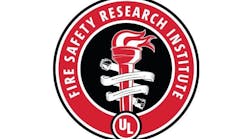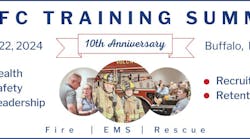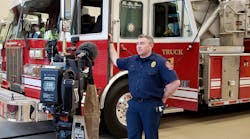Students of fire history know that the Beverly Hills Supper Club fire occurred on May 28, 1977, in Southgate, KY, and claimed the lives of 167 people, making it the third-most-deadly nightclub fire in U.S. history. Students of fire science know that despite the fact that the exact cause of the fire was never conclusively determined, many important life-safety lessons were learned about how crowds will behave in a fire.
A book that has opened a new chapter in the history of the Beverly Hills Supper Club fire calls into question many of the previously settled questions about how and where the fire began. The Beverly Hills Supper Club, The Untold Story Behind Kentucky’s Worst Tragedy, by Robert D. Webster with David Brock and Tom McConaughy, was published in 2012 by Saratoga Press LLC. It is now available in tablet editions.
The book questions the long-held assumption that the fire was accidental, suggesting it was set intentionally by organized crime figures who were trying to wrest control of the highly profitable club away from the owners. Whether the premise that the fire was set by organized crime is accurate or not, The Untold Story offers a fascinating look at a major fire of historical significance in unprecedented detail.
The authors pored through hundreds of first-hand-witness accounts given to investigators back in 1977, studied innumerable investigative reports and personally interviewed dozens and dozens of witnesses to piece together a truly impressive work. While on the one hand an investigate report in and of itself, the book contains hundreds of personal vignettes, some telling tales of tragedy, some as good as any crime-mystery and some of outright heroism that previously went unacknowledged. The book includes diagrams and floor plans of the club, as well as more than 100 photographs depicting the building, firefighting and rescue operations, the aftermath and key figures who were involved.
Lessons still relevant
The Untold Story highlights a number of concerns that remain relevant to fire service leaders today, including:
• The need to manage misinformation and rumors after a major incident, a concern that takes on even more significance in 2014 than it did in 1977 with Twitter, Facebook and other social media platforms
• The need to thoroughly document an incident scene before letting demolition occur
• The fact that people – some well intentioned and some not-so well intentioned – will concoct theories about a major incident to suit their own interests, including the media, elected officials and personal-injury attorneys
In the days after the fire, the media ran wild with story after story containing allegations that the building owners were responsible for severe overcrowding, locking and chaining exit doors and delaying the report of the fire to the fire department. Each of these allegations was later proven to be false, but by then the public’s lynch-mob mentality had been cast. Efforts to tell the truth about what happened were dismissed as part of a cover-up orchestrated by the well-connected club owners. Despite the fact that all the allegations about the owners have been repeatedly refuted by the facts, the belief that they were criminally culpable persists today, some 37 years later.
The authors’ diligent research uncovers the reason for much of the misinformation: faulty witness recollections about what happened coupled with speculation and the ever-present tendency of people to embellish. Here is where the authors went above and beyond in their research, digging deeper into the stories within the story.
One story within the story involved an allegation by two waitresses who claim they observed a police officer slam an exit door closed in the face of panicked escaping victims and then bar the door shut with a piece of wood. The women were certain that the officer’s actions led to the deaths of victims trying to escape.
The authors corroborated that a door-slamming incident did in fact occur, but showed that it was not exactly as the waitresses recollected. An exit door did in fact slam shut as patrons were exiting. A police officer who was nearby assisting evacuees promptly reopened it, and as he did it sucked closed a second time. He tried again to open it – but it was so hot he burned his hands. A bystander handed the officer a piece of wood, which he then used to wedge the door open.
The authors examine countless other stories within the story, including claims that the staff tried to fight fire with extinguishers before reporting it, that staff delayed evacuating patrons and that exits doors were chained and locked. The stories are organized chronologically, giving the reader a very good sense for what led up to the fire, how the fire developed minute by minute and how the investigation and subsequent litigation unfolded.
A portion of the book that particularly appealed to me involved the civil suit brought by victims and families of the deceased against the aluminum wiring industry. There were 970 named defendants in the suit, including such companies as General Electric, Westinghouse and Underwriters Laboratories. The theory of the case was that a faulty connection in the aluminum wiring caused the fire.
The problem is it appears there was no aluminum wiring in the Zebra Room, where the fire is believed to have started, at least according to the electrician who wired the room. In addition, there was no conclusive proof that the fire was electrical in origin. Nevertheless, the victims recovered more than $50 million in settlements and judgments against the named parties.
We likely will never know the truth behind the cause of the Beverly Hills Supper Club Fire. The Untold Story offers us greater insight into this major fire and cause to consider the importance of how we handle our own incidents, could leave us subject to second-guessing.






